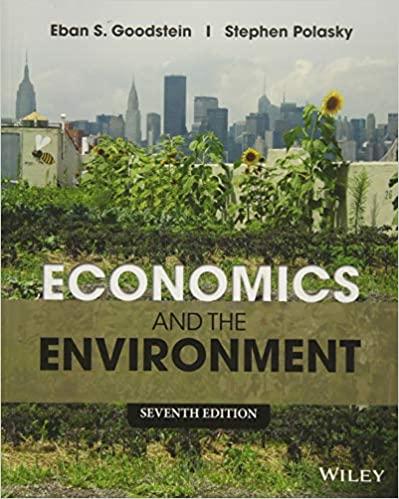These smoking problems are a little silly but are good at illustrating some basic lessons about efficiency.
Question:
These smoking problems are a little silly but are good at illustrating some basic lessons about efficiency. So, this time, Groucho and Harpo work together in the same office.
Groucho smokes; Harpo hates smoke. Groucho currently smokes 12 cigars per day.
He faces marginal costs of reducing smoking (withdrawal pains) equal to $x, where x is the number of cigars reduced. In other words, the cost of giving up the first cigar is $1, the second, $2, and so forth. Harpo receives marginal benefits (reduced discomfort and risk of cancer) equal to $(12 − x) from Groucho reducing the number of cigars smoked.
It is possible to rent a clean-air machine that reduces smoke in the air by 50% for $10 per day. It is also possible to relocate Groucho in a different office so Harpo would not have to breathe any smoke at all for $40 per day.
a. Draw a diagram showing the marginal costs and marginal benefits of pollution reduction; put the number of cigars reduced on the horizontal axis. Use this diagram to determine the efficient number of cigars reduced if machine rental or relocation is not allowed.
b. Suppose that the clean-air machine is installed. What is the efficient number of cigars reduced now? [Hint: The marginal benefits of reduction fall to $(6 − x/2).]
c. Recall that Groucho begins by smoking 12 cigars a day. Is it more efficient to rent the machine or relocate Groucho to another room?
d. This problem has no transactions costs or free riding. The Coase theorem says that, in this kind of simple example, the efficient outcome should be achieved through negotiation even if Harpo has the power to banish Groucho to another office at Groucho’s expense. Explain why.
Step by Step Answer:

Economics And The Environment
ISBN: 9781118539729
7th Edition
Authors: Eban S. Goodstein, Stephen Polasky





